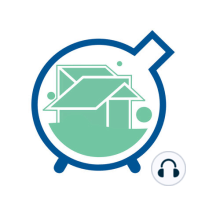34 min listen
Obsessed With Humidity
ratings:
Length:
61 minutes
Released:
Jul 18, 2020
Format:
Podcast episode
Description
The world’s climate is changing and so the way we think about design needs to change with it. But before we know what that looks like, let’s dig into the science and understand how it might change. And as we think about expanding humid climate zones in the era of climate change, what does the cutting edge dehumidification technology look like? You’re going to find out. Join us as Kristof interviews Pamela Cabrera about the expansion of humid climate zones in the future and the development of passive, membrane-based dehumidification._______Pamela is currently a project climate engineer at Transsolar. Cabrera’s research centers on building science and new material assemblies for passive climate control systems. Her professional experience has alternated between New York and Lima, where she co-ran the studio CE-AD for three years. She is a partner at the Peruvian NGO Construye Identidad, where she contributes with research on the development of vernacular building and materials. She has a BArch from The Cooper Union and a Master’s in Design Studies in Energy & Environment from Harvard GSD, where she received the Daniel L. Schodek Award for Technology and Sustainability._______Abstracts For Pamela’s Research WorkUncovering Future Mold Risks in Existing Residential Walls with Climate Change Pamela. L. Cabrera1 , Holly W. Samuelson1 1 Harvard University, Graduate School of Design, Cambridge, MA, USAThis paper exposes the vulnerability of prevalent, wood-framed residential envelopes to mold-growth in predicted future weather, a topic that is yet to be explored in scientific literature. In the U.S. and elsewhere, residential exterior walls have followed a tradition of layered construction, including interior insulation to mitigate heat loss and vapor membranes to control moisture. These building assemblies, and their defining codes, have been designed for a narrow definition of historical climate which may be ill- suited for future conditions. We combine state-of-the-art hygrothermal simulation and mold-growth computation with morphed future weather data to analyze 60 prevalent code-compliant walls in three U.S. cities: New York City, Philadelphia and Washington D.C. Our results show an imminent problem in all tested wall types indicating future mold prevalence. The work serves as a framework for considering future hygrothermal risks in building envelopes and demonstrates the widespread need for further work on building resilience.The Humid Threshold: Cooling hot, humid climates via membrane dehumidification Thesis, Master in Design Studies - Energy and Environment Pamela L. Cabrera Pardo Harvard University, Graduate School of Design, Cambridge, MA, USAThe thesis centers on the design of a membrane material for cooling hot, humid climates via dehumidification, by selecting water vapor out of humid air. While membrane selectivity is a well-known field of study, found throughout nature and applied across industries, architecture has only regarded membranes as barriers. However, membranes have the potential to separate substances through diffusion, a passive process that is isothermal, and therefore a membrane selectivity system for dehumidification can be less energy intensive than typical vapor compression system used for cooling (Yang, Yuan, Gao, & Guo, 2015) (Woods, 2014) (Mahmud, Mahmood, Simonson, & Besant, 2010). Membrane dehumidification research has been developed over two decades for the enhancement of air mechanical units, but it has not yet been proposed as a building material. This thesis investigates the possibility of using membranes as a building screen material to dehumidify incoming air as it is drawn into a building. This application could lower the latent heat that drives air conditioning demand in humid climates, and thus increase natural ventilation potential and other passive dry-bulb cooling strategies.
Released:
Jul 18, 2020
Format:
Podcast episode
Titles in the series (100)
Water, Water, Everywhere (In Its Fourth State Too): In this episode of The Building Science Podcast, Kristof explores all the great mysteries of water (especially the water you don't see). by The Building Science Podcast
